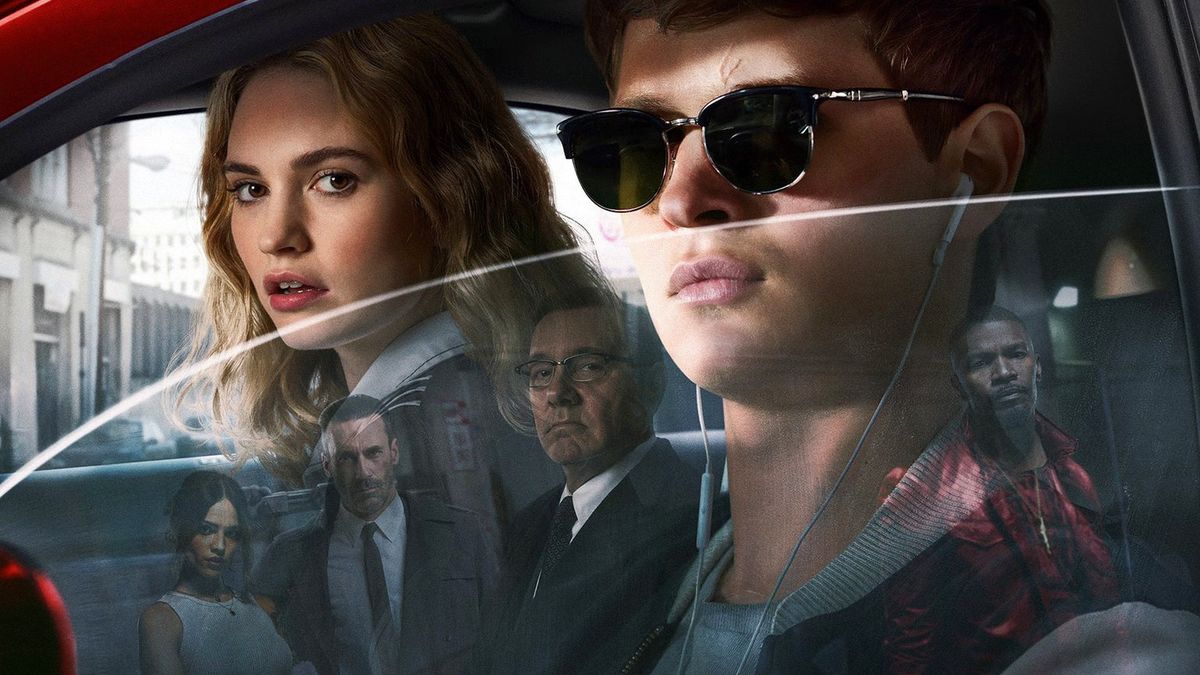Director: Edgar Wright
Starring: Ansel Elgort, Lily James, Kevin Spacey, John Hamm and Jamie Foxx
It’s been four years between drinks for fans of Edgar Wright. While remnants of his involvement remain in 2015’s Ant Man, they ultimately underline the overall disappointment of what could have been. Luckily, he’s back with his action/music hybrid Baby Driver, a stylish update of the old-school heist flick. It’s Wright’s most commercial film to date and coincidentally his first to film in the US. Using the streets of Atlanta, Georgia as his own personal racecourse, Edgar Wright’s Baby Driver is a pulsating drive through the mind of a virtuoso talent, whose impeccable track record speaks for itself.
In his first headlining role, Ansel Elgort is Baby Driver, the baby-faced getaway driver who times his chases to the beat of a specifically curated soundtrack. Baby suffers from Tinnitus, the result of a childhood car crash that killed both his parents. The music allows him to block out the ringing in his ears, helping him to focus and heightening his driving ability. His talent catches the interest of criminal mastermind Doc (Kevin Spacey), who organises bank robberies across the Atlanta metropolitan area. In dire financial straits, Baby agrees to work heists for him but after meeting Debora (Lily James), a waitress in a local diner. He becomes eager to get out of a life of crime and start a new life with her. However, deep in debt with Doc, Baby realises that finding a fresh start may be harder than just speeding away.
Perhaps the most disappointing thing about the film is that it plays on the familiar heist trope of a “one last job” without offering much to subvert expectations. It’s a cliché that Michael Mann has worked many times over in films such Thief and Heat, and fans of those sorts of films will be able to guess the general arc of Baby Driver’s story from beginning to end. The biggest deviation is that, while those films typically feature older career-criminals looking for a comfy retirement, Baby Driver features a younger, fresh-faced protagonist whose strings are being pulled from higher up. As a result, it’s hard not to root for Baby as he tries to regain control over his life and put it back on track. He’s a likeable enough character and after losing both of his parents at a very young age, he’s trying his best to make something of his life, even if that means veering off into crime.
From the opening scene played to the rocking rhythm of Jon Spencer Blues Explosion’s “Bellbottoms”, the film lets the audience know early on that the music is an integral part of the film’s diegesis. In the scene, Baby is sitting in his car waiting for his accomplices as they rob a nearby bank. However, instead of idling around, the camera follows him as he grooves and sings along to the music. With the fast cutting and sweeping camera, Wright manages to elicit more excitement from the inside of the car than from the action occurring outside.
Impressively put together, Wright stages it similarly to his 2003 music video Mint Royale’s “Blue Song”, except with over a decade more of filmmaking experience to hone his talent. This is most evident in the precision of the scene, on cue with the music, his accomplices jump into the car and Baby puts the pedal to the metal, roaring down the highway cops in tow. The shift to full-blown action is facilitated by the beat of the music, and it’s this type of pinpoint precision that puts Baby Driver a cut above standard action fare. Filled with these types of stylistic flourishes, they never feel superfluous even when they’re indulgent. In one scene Baby goes on a morning coffee run listening to “Harlem Shuffle” by Bob & Earl and the lyrics become part of the mise-en-scène, appearing as graffiti on street murals. The stylish scene feels essential despite not adding much to the overall narrative.
There is an ever so slight disappointing feeling that the film lacks the belly-busting humour of Wright’s previous works, in particular Shaun of the Dead and Hot Fuzz. Given how effectively Wright has married action and comedy before, it would have been good to see more of his trademark humour peppered throughout the film, such as the hilarious Mike Myers/ Michael Myers mask mix up scene. Although the decision to focus largely on the action may have been a purposeful one by Wright whose British comedies haven’t exactly brought in box office gold stateside. Despite amassing a loyal fan base over the years, the cult filmmaker has yet to have a bona fide box office hit, but he seems determined to change that with Baby Driver.
Overall, Baby Driver is a triumph of style over substance. It turns the chase film into high-art without challenging the viewers’ expectations of the genre. While the story lacks surprises, the film’s inventive chase sequences and perfectly tuned soundtrack make it irresistibly entertaining. After all it’s not the destination but the ride that makes Baby Driver worth jumping on board for. And it’s a ride worth taking over and over. Now, when can we get a Baby Driver sing-along version?
Words by Dominic Kwaczynski

